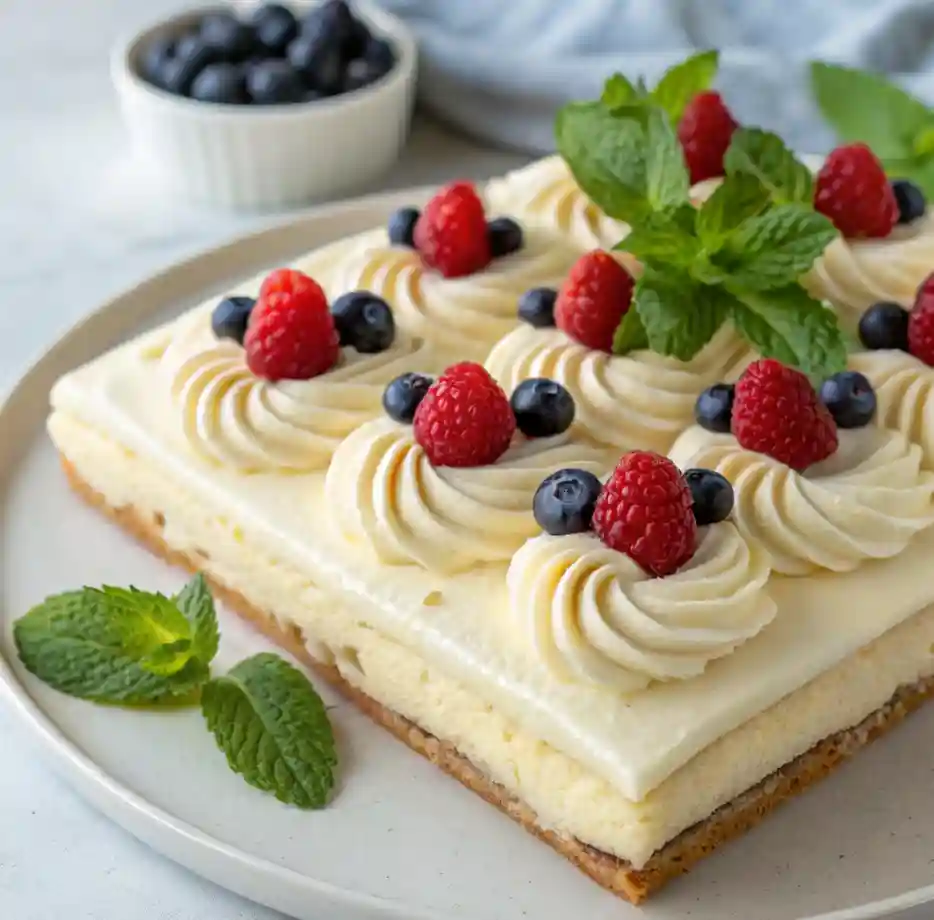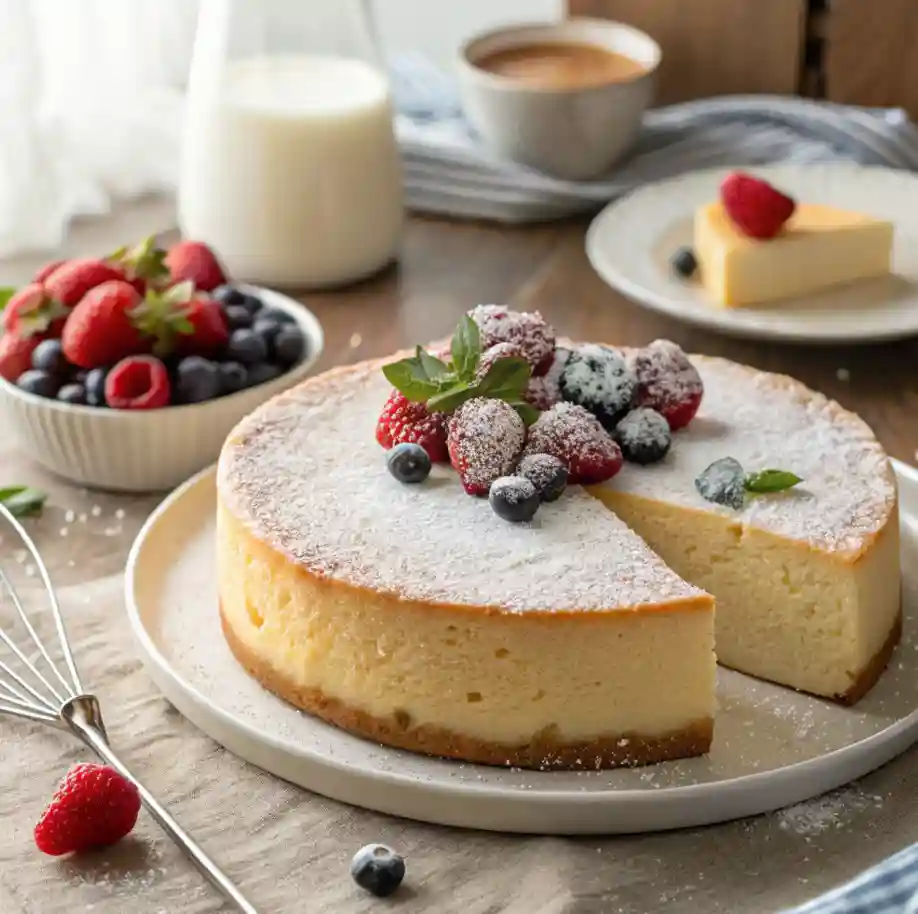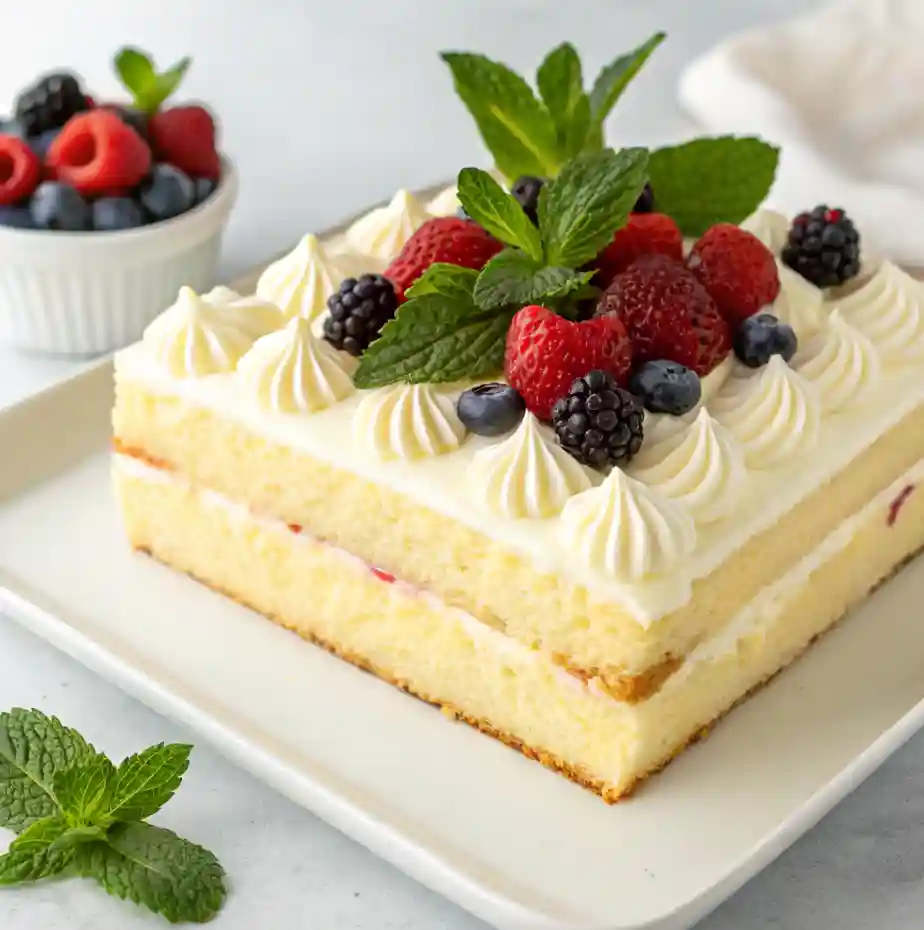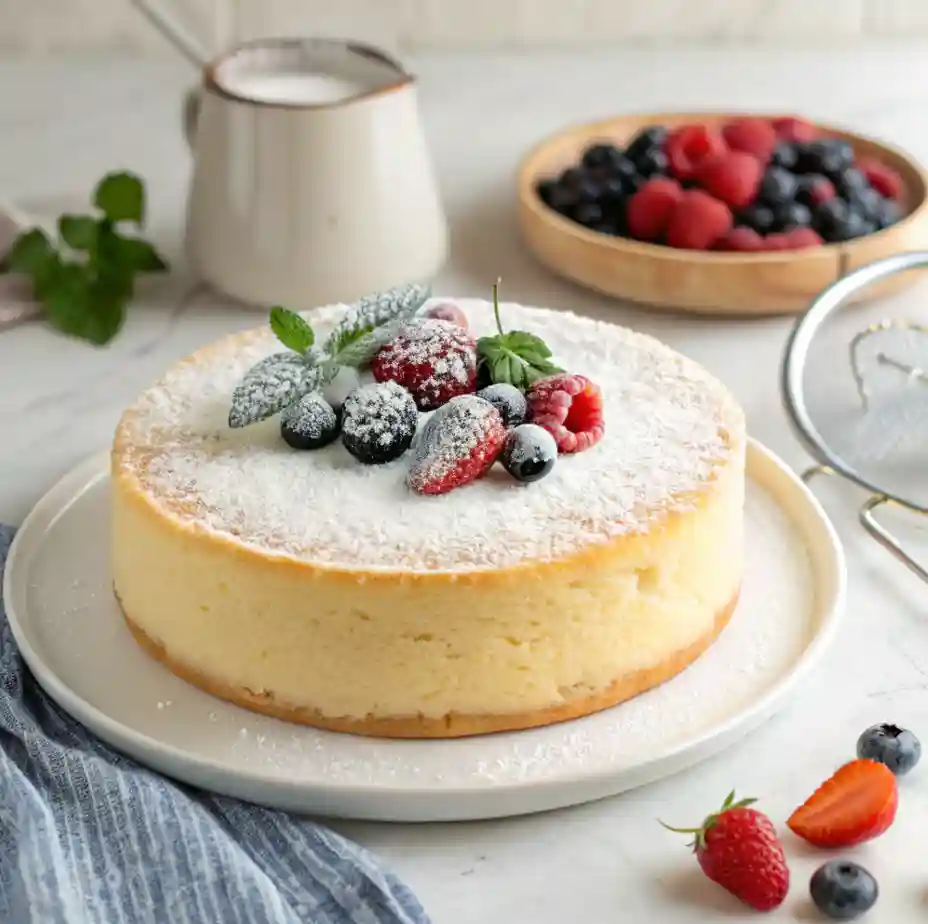When it comes to effortless and crowd-pleasing desserts, sheet cakes always steal the spotlight. But what if you could elevate this classic treat with a simple ingredient that adds incredible moisture and a subtle tangy flavor? Enter the kefir sheet cake, a recipe that combines ease of preparation with a deliciously unique twist. Whether you’re baking for a casual family dinner or a festive gathering, this cake promises to impress.

Using kefir in baking is a game-changer. Its natural creaminess not only ensures a perfectly moist texture but also introduces a depth of flavor that sets this dessert apart from the rest. If you’ve ever wondered how to achieve a flawless sheet cake with minimal effort, this recipe is your answer. Let’s dive into the steps and discover the secret to making a dessert that’s as wholesome as it is delightful.
What Makes Kefir Special for Baking?
Kefir is more than just a trendy ingredient—it’s a secret weapon for creating desserts that are as moist as they are flavorful. This fermented milk product, packed with probiotics, brings a subtle tang and creamy texture that works wonders in baking. When used in a kefir sheet cake, it enhances every bite, delivering a soft and tender crumb that’s hard to achieve with traditional dairy.

One of kefir’s standout qualities is its natural acidity, which reacts beautifully with baking soda or powder, resulting in a light and fluffy cake. Beyond the texture, kefir also imparts a richness that doesn’t overpower, making it an ideal choice for cakes, muffins, and other baked goods. Plus, it’s a healthier option, offering nutrients like calcium, protein, and gut-friendly bacteria.
If you’ve been searching for ways to elevate your dessert game while keeping the process simple, baking with kefir is the way to go. It’s the ingredient that transforms a basic sheet cake into something truly special. Ready to see it in action? Let’s move on to the recipe!
Ingredients for the Perfect Kefir Sheet Cake
Creating a delicious kefir sheet cake starts with the right blend of ingredients. Each component plays a role in achieving the ideal balance of flavor and texture, making this dessert an irresistible treat for any occasion.

Here’s What You’ll Need:
- Kefir: The star of the recipe. It ensures the cake stays moist and gives it that signature light texture.
- Flour: A reliable base that provides structure to the cake.
- Sugar: Adds just the right amount of sweetness to complement the tangy notes of kefir.
- Eggs: Essential for binding and contributing to a soft, tender crumb.
- Butter or Oil: Enhances richness and keeps the sheet cake moist.
- Baking Soda or Baking Powder: Reacts with the acidity of kefir to create a perfectly fluffy texture.
- Vanilla Extract: Adds a warm, subtle flavor that rounds out the tang of kefir.
Optional Additions:
- Citrus Zest: A fresh burst of flavor that pairs beautifully with the creamy base.
- Chopped Nuts or Fruits: Add texture and variety to make the cake even more special.
By combining these simple ingredients, you’ll have everything you need to create a sheet cake that’s as delightful to make as it is to eat. Once you’ve gathered your ingredients, it’s time to transform them into a mouthwatering dessert. Let’s get started!
Step-by-Step Recipe for the Perfect Kefir Sheet Cake
Now that you have all your ingredients ready, it’s time to bring this kefir sheet cake to life. This simple, step-by-step recipe ensures you’ll achieve a moist, flavorful dessert with minimal effort. Whether you’re a seasoned baker or a beginner, this guide has you covered.
Instructions:
- Preheat Your Oven
Set your oven to 180°C (350°F) and prepare a rectangular baking pan by greasing it lightly or lining it with parchment paper. - Mix the Wet Ingredients
In a large bowl, whisk together the kefir, eggs, and vanilla extract until smooth. Add melted butter or oil and continue mixing until fully combined. - Combine the Dry Ingredients
In a separate bowl, sift together the flour, sugar, and baking soda (or powder). Sifting ensures there are no lumps and makes the cake texture light and airy. - Bring It All Together
Gradually add the dry ingredients to the wet mixture, stirring gently to combine. Avoid overmixing, as this can make the cake dense. You want the batter to be smooth and slightly thick. - Pour and Spread
Pour the batter into your prepared baking pan, spreading it evenly with a spatula to ensure a uniform bake. - Bake to Perfection
Place the pan in the preheated oven and bake for 25-30 minutes, or until a toothpick inserted into the center comes out clean. The top should be lightly golden. - Cool and Serve
Allow the cake to cool in the pan for 10 minutes before transferring it to a wire rack. Once cooled, slice it into squares and serve as is, or add your favorite frosting for extra indulgence.

This easy process results in a sheet cake that’s not only incredibly soft but also brimming with the unique flavor that only kefir can provide. Whether it’s for a casual afternoon snack or a special occasion, this recipe is sure to be a hit.
Stay tuned for tips on how to customize your cake and take it to the next level!
Optional Variations and Add-Ons for Your Kefir Sheet Cake
One of the best things about a kefir sheet cake is its versatility. While the classic recipe is delicious on its own, adding a personal touch can make it even more special. Whether you prefer a simple glaze or want to experiment with bold flavors, these variations and add-ons will help you customize your cake to suit any occasion.
Flavor Enhancements
- Citrus Twist: Add a tablespoon of lemon or orange zest to the batter for a refreshing burst of flavor. The tanginess pairs beautifully with the creamy base created by the kefir.
- Spices: A pinch of cinnamon or nutmeg can add warmth, making this sheet cake a cozy treat for colder months.
Toppings and Frostings
- Simple Glaze: A light drizzle of powdered sugar mixed with a splash of kefir creates a tangy-sweet topping that complements the cake’s moist texture.
- Cream Cheese Frosting: For a richer option, spread a layer of cream cheese frosting over the cooled cake. It adds a luxurious touch without overpowering the delicate flavor of the cake.
- Fresh Fruit: Top the cake with sliced strawberries, blueberries, or raspberries for a fresh and colorful finish.
Mix-Ins for Extra Texture
- Nuts: Fold in chopped walnuts, almonds, or pecans for a delightful crunch.
- Chocolate Chips: For a sweeter twist, add a handful of chocolate chips to the batter.
- Dried Fruits: Raisins, cranberries, or chopped apricots add a chewy texture and subtle sweetness.
Healthier Alternatives
- Replace some of the sugar with honey or maple syrup for a more natural sweetness.
- Use whole wheat flour or gluten-free alternatives to make the cake suitable for different dietary needs.
These variations not only elevate your kefir sheet cake but also allow you to experiment with flavors and textures. Whether you’re baking for a special event or simply trying something new, these ideas ensure your cake is always a standout dessert.
Next, we’ll share storage tips and serving suggestions to keep your creation as fresh and delicious as the day it was baked!
Tips for Storing and Serving Your Kefir Sheet Cake
After you’ve baked the perfect kefir sheet cake, keeping it fresh and presenting it in the best way possible will ensure it’s enjoyed to the fullest. Whether you’re serving it immediately or saving leftovers for later, these tips will help maintain its moist texture and delicious flavor.
How to Store Your Kefir Sheet Cake
- Room Temperature Storage:
- If you plan to enjoy the cake within a day or two, cover it with plastic wrap or place it in an airtight container to keep it soft and prevent it from drying out.
- Store it in a cool, dry spot away from direct sunlight.
- Refrigeration:
- For longer storage, especially if the cake has frosting, refrigerate it. Wrap the cake securely or store it in a covered container to lock in moisture.
- Bring it to room temperature before serving for the best flavor and texture.
- Freezing for Later:
- To freeze, cut the cake into individual servings, wrap each piece tightly in plastic wrap, and store them in a freezer-safe bag or container.
- When ready to eat, thaw a portion at room temperature or warm it briefly in the microwave for a fresh-out-of-the-oven taste.
Serving Suggestions
- Plain and Simple: This cake is delightful on its own, with its tender crumb and subtle tangy flavor shining through.
- Topped with Fresh Whipped Cream: Add a dollop of whipped cream for a light and airy complement.
- Paired with Fruit: Serve slices with fresh berries or a fruit compote for a refreshing contrast.
- Warm and Cozy: Gently warm the cake and enjoy it with a drizzle of honey or a sprinkle of powdered sugar.
When to Serve Your Kefir Sheet Cake
This versatile dessert fits any occasion. Whether it’s a family gathering, a birthday party, or a casual afternoon treat, its simplicity and rich flavor make it a crowd-pleaser. Plus, the ease of cutting and serving makes it ideal for potlucks and events.
By following these tips, your kefir sheet cake will remain a delectable treat, no matter when or how it’s served. Up next, we’ll tackle some frequently asked questions to help you master the art of baking with kefir!

Perfect Crab Brulee: The Ultimate Seafood Appetizer
Equipment
- 1 Mixing bowl For preparing the custard mixture.
- 1 Whisk To mix the ingredients evenly.
- 4 Ramekins For individual portions of the brulee.
- 1 Baking Dish To hold the ramekins in a water bath.
- 1 Kitchen Torch To caramelize the sugar topping.
Ingredients
Main Ingredients
- 1 cup fresh crab meat preferably lump crab
- 1 cup heavy cream
- 2 egg yolks
- 1/4 cup granulated sugar
- 1 teaspoon vanilla extract optional for subtle sweetness
- Salt and pepper to taste
- 1 tablespoon butter for greasing ramekins
- Additional sugar for caramelizing
Optional Additions
- Grated Parmesan cheese for a richer flavor
- Smoked paprika or cayenne for a spicy kick
- Lemon zest or fresh herbs dill, parsley, chives
Instructions
- Instructions
- Preheat Your Oven: Preheat to 180°C (350°F) and prepare a rectangular baking pan by greasing or lining it with parchment paper.
- Mix the Wet Ingredients: In a large bowl, whisk kefir, eggs, vanilla extract, and melted butter until smooth.
- Combine Dry Ingredients: In a separate bowl, sift together flour, sugar, and baking soda.
- Combine Mixtures: Gradually fold the dry ingredients into the wet mixture, stirring gently until just combined.
- Pour the Batter: Spread the batter evenly into the prepared baking pan.
- Bake: Bake for 25-30 minutes or until a toothpick inserted in the center comes out clean.
- Cool and Serve: Let the cake cool in the pan for 10 minutes, then transfer to a rack. Slice and serve plain or with your favorite topping.
- Serve and Enjoy: Garnish with fresh herbs or lemon zest. Pair with crusty bread, crackers, or a light salad for a complete experience.
Notes
- Use fresh crab meat for optimal flavor.
- Store leftovers in the fridge and reheat gently before serving.
- Experiment with spices and garnishes to create unique variations.
Baking a kefir sheet cake is more than just creating a delicious dessert—it’s about combining simplicity with versatility. This recipe showcases how kefir, with its tangy flavor and ability to create a moist texture, transforms a classic sheet cake into something truly special. Whether you’re baking for a cozy family gathering or an elegant event, this cake is sure to please.
From its easy preparation to its endless customization options, the kefir sheet cake stands out as a go-to recipe for both novice and experienced bakers. Its soft, tender crumb and rich flavor make it an instant favorite, while its nutritional benefits add a touch of wellness to your indulgence.
If you’re ready to experience the magic of baking with kefir, try this recipe today. Don’t forget to share your creations or any creative twists you’ve added—we’d love to hear how you’ve made this recipe your own. Happy baking!
FaQ
Absolutely! Both store-bought and homemade kefir work wonderfully in this recipe. If you’re making kefir at home, ensure it’s properly fermented and has a thick, creamy consistency for the best results in your sheet cake.
If you don’t have kefir on hand, you can substitute it with buttermilk or plain yogurt. However, the distinct tanginess and probiotics unique to kefir give this cake its signature flavor and texture, so it’s worth seeking out.
Yes, you can adapt the recipe to be gluten-free by using a one-to-one gluten-free flour blend. The kefir will still provide moisture and fluffiness, ensuring your cake maintains its delicious texture.

1 thought on “How to Make the Perfect Kefir Sheet Cake at Home”